What You Need to Know About Renting a Car in Colombia: A Comprehensive Guide for Travelers
Planning to rent a car in Colombia? Whether you're exploring the vibrant cities of Bogotá and Medellín or venturing into the breathtaking rural landscapes, this comprehensive guide is essential for a smooth and stress-free journey. Learn everything you need to know about renting a car in Colombia, from essential documents and insurance requirements to navigating the country's unique driving culture and road conditions. We’ll also cover cost considerations, tips for dealing with Pico y Placa driving restrictions, and how to ensure your safety on the road. Perfect for first-time visitors and seasoned travelers alike, this guide will equip you with practical advice to make your Colombian road trip unforgettable.
TRAVELFAMILY TRAVELCOLOMBIA
Meghan Gunseor
5/8/20246 min read
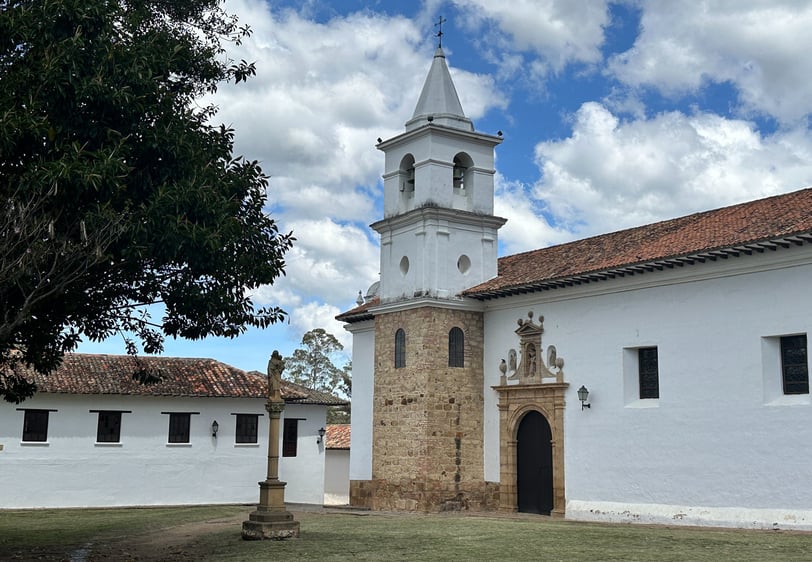

What You Need to Know About Renting a Car in Colombia:
A Comprehensive Guide for Travelers
Renting a car in a foreign country can be intimidating, especially when navigating unfamiliar rules, regulations, and driving conditions. Colombia, with its breathtaking landscapes and vibrant cities, offers a unique driving experience. However, understanding the nuances of renting a car here can transform your trip from stressful to seamless. This guide covers everything you need to know about renting a car in Colombia, from initial booking to navigating the country's distinct road conditions.
Essential Requirements for Renting a Car in Colombia
When renting a car in Colombia, you'll need a few essential documents. Ensure you have your passport and a valid driver’s license. While an International Driver’s Permit (IDP) isn't mandatory, it's recommended for added peace of mind. Despite what some travelers might suggest about using car rental insurance through a major credit card, our experience showed that rental agencies rarely accept this option. It’s crucial to have your phone with active service for any verification processes, as many rental agencies require on-the-spot email confirmations, and most locations don’t offer Wi-Fi.
Foreigners generally face the same requirements as locals, but insurance is often more expensive. Most rental companies require you to purchase their insurance, and it’s advisable not to argue this point to avoid complications.
Cost Considerations When Renting a Car in Colombia
Be aware that automatic vehicles are significantly more expensive than manual ones. Since manual transmission cars are the norm in Colombia, opting for one can save you money. Daily rental costs may be relatively cheap compared to the United States, but insurance premiums can quickly add up, especially for foreigners. Overall, the total cost to rent a car in Colombia is often comparable to the U.S.
Colombia has a driving restriction system known as Pico y Placa, which limits vehicle circulation in major cities on specific days based on the last digit of the car's license plate. If you’re caught driving on a restricted day, fines range from $125 to $150 USD. We learned this the hard way in Medellín, where we were fined twice due to ignorance of the rule. It’s essential to check the Pico y Placa schedule and plan your rental around it to avoid fines.
In cities like Bogotá and Medellín, it's often more practical to rely on Uber, taxis, or public transportation for day-to-day travel. Renting a car is more useful when you’re ready to explore beyond the city limits. If you do rent a car in these cities, be sure to confirm that the vehicle’s license plate won't conflict with Pico y Placa regulations on your travel days.
Navigating Road Rules and Driving Culture in Colombia
Driving in Colombia is an adventure, with rules that differ significantly from those in other countries. For instance, turning right on red, a common practice in the U.S., is not allowed in Colombia. Motorcyclists are ubiquitous and often weave through traffic or split lanes, so drivers need to stay vigilant and allow space for them. Interestingly, motorcycles seem to have an unspoken right of way, especially at red lights, where cars often leave room for them to gather at the front.
Safety on the road is a common concern for travelers, but Colombia’s driving culture isn’t as hazardous as some might think. We traveled extensively as a family and never felt unsafe. However, driving can be intense. Local drivers often ignore speed limits, pass on blind corners, and navigate deteriorating roads, making defensive driving essential. If you’re traveling with young children, note that car seats and boosters are rarely available through rental agencies, and it’s common to see children without them.
Understanding Road and Traffic Conditions
Road quality in Colombia varies depending on the area. In cities, roads are generally well-maintained, but in rural or remote regions, conditions can change quickly. Unpaved sections and potholes are common, so renting a vehicle that can handle rough terrain is advisable if you plan to venture outside major cities.
Cash is essential for tolls when driving long distances in Colombia. Toll roads are prevalent, especially between cities, and while some booths accept cards, many are cash-only. Keep small denominations on hand, as tolls are frequent and can add up quickly.
For navigation, Google Maps is reliable for most routes, but many locals and rental companies recommend Waze. However, Waze sometimes leads you onto questionable paths, adding unexpected time to your trip. It’s wise to double-check your route, especially in less-traveled areas.
City-Specific Driving Considerations
In major cities like Bogotá or Medellín, understanding the Pico y Placa system is crucial. This system helps reduce traffic by restricting vehicle use on certain days based on the car’s license plate number. The schedule changes weekly, and rental agencies might not inform you about it, so it’s essential to check online to avoid fines.
Driving in Medellín’s hilly terrain presents unique challenges. The city’s steep hills require experienced handling, especially if you're driving a manual transmission vehicle. If you’re not confident in your ability to navigate these conditions, consider paying extra for an automatic vehicle.
Bogotá’s traffic can be overwhelming, with long delays common during rush hours. One-way roads can add to the complexity, so plan your routes carefully. Renting a car in these cities can be more hassle than it’s worth unless you’re heading out on a road trip.
The Car Rental Process in Colombia
The car rental process in Colombia can differ from what you're used to. While booking online is possible, many travelers find it cheaper and more reliable to rent directly from a local agency. Local rental companies often offer better rates than international brands like Hertz or Avis, which tend to subcontract through smaller Colombian companies.
When renting in person, a serviceable phone with Google Translate can be invaluable for communication. The process typically involves providing your documents, getting them photocopied, and receiving the keys. Extending your rental period usually requires an in-person visit to the rental office, as additional fees can apply. Dropping off the car at a different location can also incur significant costs, so it’s often more economical to keep the vehicle for your entire trip.
Safety and Security Tips
In case of an accident or if you require roadside assistance, your first step should be to call the car rental company. They will guide you through the process and may send help if necessary. Colombia’s emergency services are generally reliable, and police and ambulances are readily available.
Expect to encounter police checkpoints, especially on highways. These are routine stops where officers check for valid documentation. While this can be intimidating, it’s standard procedure and shouldn't be a concern if you have the necessary documents. If a police officer signals you to stop, comply immediately. More often than not, if they see you're a tourist, they’ll wave you through without issue.
Cultural Considerations for Driving in Colombia
Driving in a foreign country requires adjustment, and Colombia is no different. One of the most noticeable aspects of Colombian driving culture is the frequent use of the horn. Honking is a form of communication, and different patterns convey different messages. While it can be jarring initially, it’s best to adapt and not let the constant honking distract you.
Another cultural consideration is fuel stations. Unlike in many countries, you won’t pump your own gas in Colombia. Attendants handle this for you, and it’s customary to offer a small tip. If you’re driving in Bogotá, Medellín, or other major cities, be aware of fuel quality, as the smell can be strong, especially in areas with heavy traffic.
Plan Ahead for a Smooth Journey
Renting a car in Colombia provides an unparalleled opportunity to explore the country’s diverse landscapes and vibrant cities at your own pace. However, it’s not without its challenges. By understanding the rental process, familiarizing yourself with local driving customs, and preparing for Colombia’s unique road conditions, you can ensure a smooth and enjoyable journey.
Ready to embark on your Colombian adventure? Make sure to book your rental car early, plan your routes carefully, and always check the Pico y Placa schedule. For more travel tips and detailed guides on exploring Colombia, subscribe to our newsletter and follow our blog. Safe travels!
As you find yourself driving through Colombia, be sure to take in all the unique sites you see on your way!
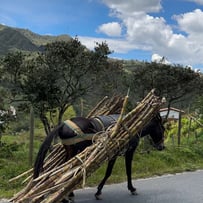
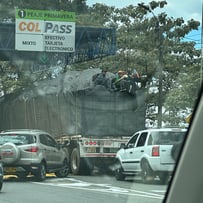
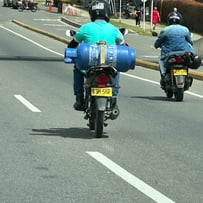
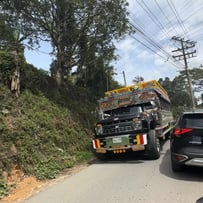
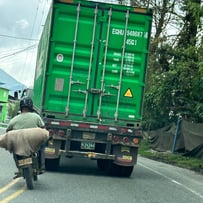
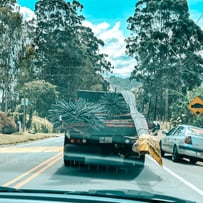


Hi! I'm


